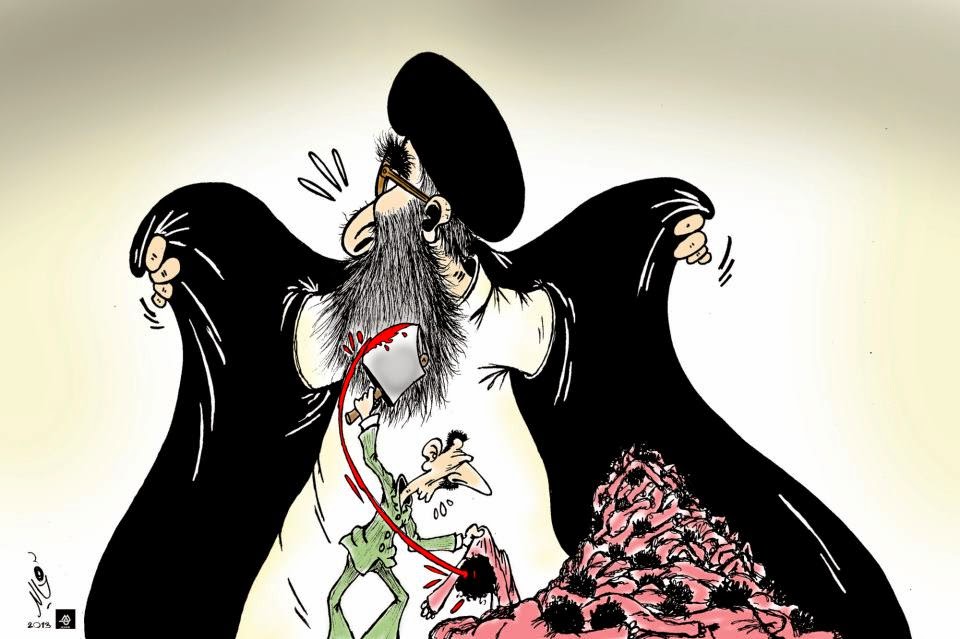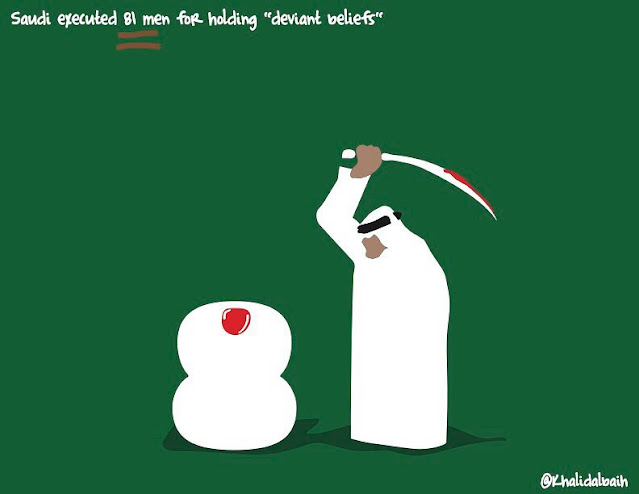Putinium; an editorial
A drawing is nothing en soi, in itself, according to the historian of political iconography, Annie Duprat. Nor is it polysemic in itself; the questions that we pose to it are.
Her definition of the undefinable cartoons is of course an argument against shooting cartoonists whenever a drawing seems to go against one's likes or wishes. She makes a Sartrean move of setting the cartoons free by underlining that any attempt at fixating an essence for them is a lie. The cartoon is a plaything of the free consciousness.
It is contrary to how we normally speak of cartoons, as she acknowledges.
I cannot wholly buy her premises. The reason not to shoot cartoonists ought not be found by denouncing cartoons, stating their the lack of value. Not even as an easy shortcut to say "end of discussion". We must not lose a precious set of artistry due to pressure from persons, who wish to silence the cartoonists. That pressure has been there all through history due to the fact that it is an outspoken art form and the two of them, cartoons and their opponents tend to lead interwoven lives.
Which is one reason why I cannot agree how it should follow from her reasoning (and is directly addressed by her) that there is no such thing as an editorial cartoon.
Oh? Behold the artwork below. The poison bottle in combination with the full frontal portrait. Add to this the specific name of the elixir and we have a drawing, the relevance of which has been continuous all through the 21st century so far. It speaks of a person and his power play as ominous as it is an active ingredient to mortality.
An editorial - be it article, leader or cartoon is defined by presenting an opinion, notably of the senior kind, i.e. by someone at a place in life in which he or she is in a position to state the personal "I" about a matter.
Editorial cartoons take off from their signature; they are critical inputs to the debate of their day. As such they endorse Sartre's argumentation that their world is the free consciousness and most cartoonists explicitly do so, stating how they would not dream of defining an essence for their work; they form part of their time full stop. Only this is precisely what makes them of value and where cartoons thrive, we can be certain to find a lively environment of exchange.
Cartoons at their best then turn out to be of a longer life than their written counterparts. For every columnist, critic and editor of an age, they are as soon forgotten as the cartoons are remembered. This is still no claim to essence; only, the little flaps of paper as they are so often condescendingly described do more than inform us about their day. For one, the grey portrait on a silence at once calculating and menacing shall make a day and age and its international political temperature sensed and understood by and maybe even turn out to be all too relevant to our successors too.
The present words are not enough to form a satisfying analysis on why cartoons OF COURSE can be of editorial value. Let the cartoon make the testimonial. My words shall after all soon be forgotten.
 |
| Riber Hansson, when it was re-published in June 2015, Riber stated: "One more rerun of an old cartoon. But it is not me repeating myself, it is the power-mad potentates". |

